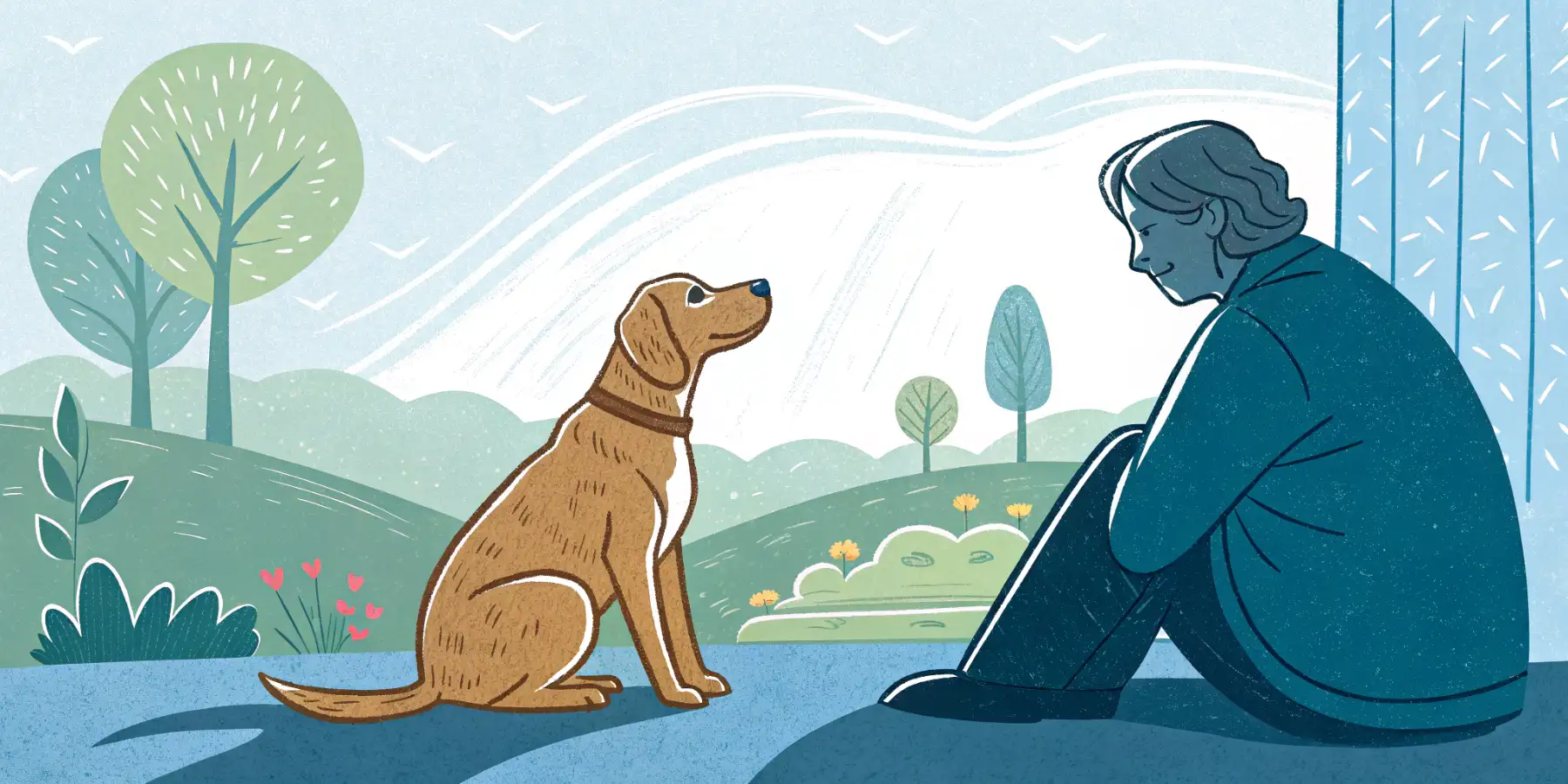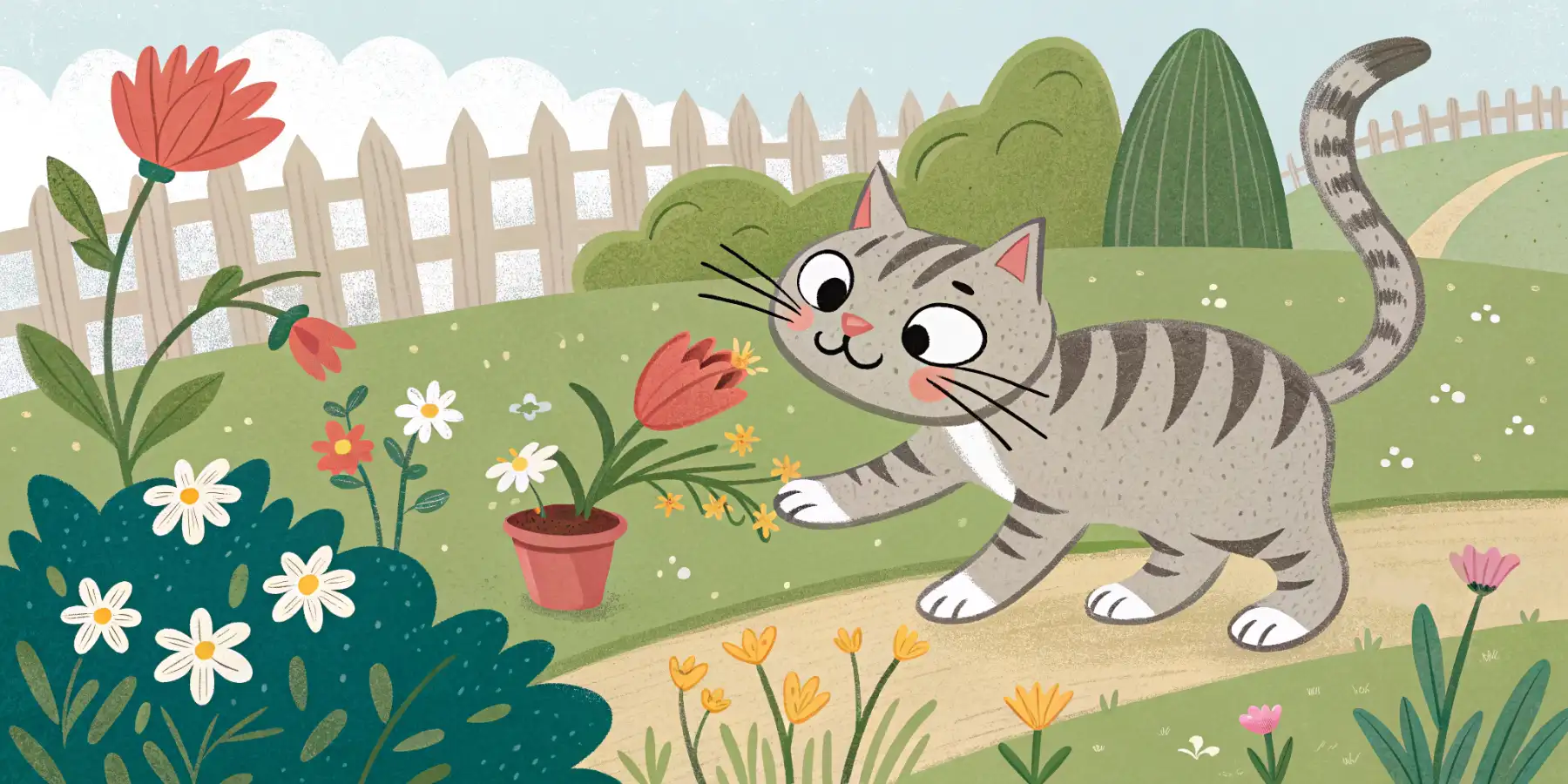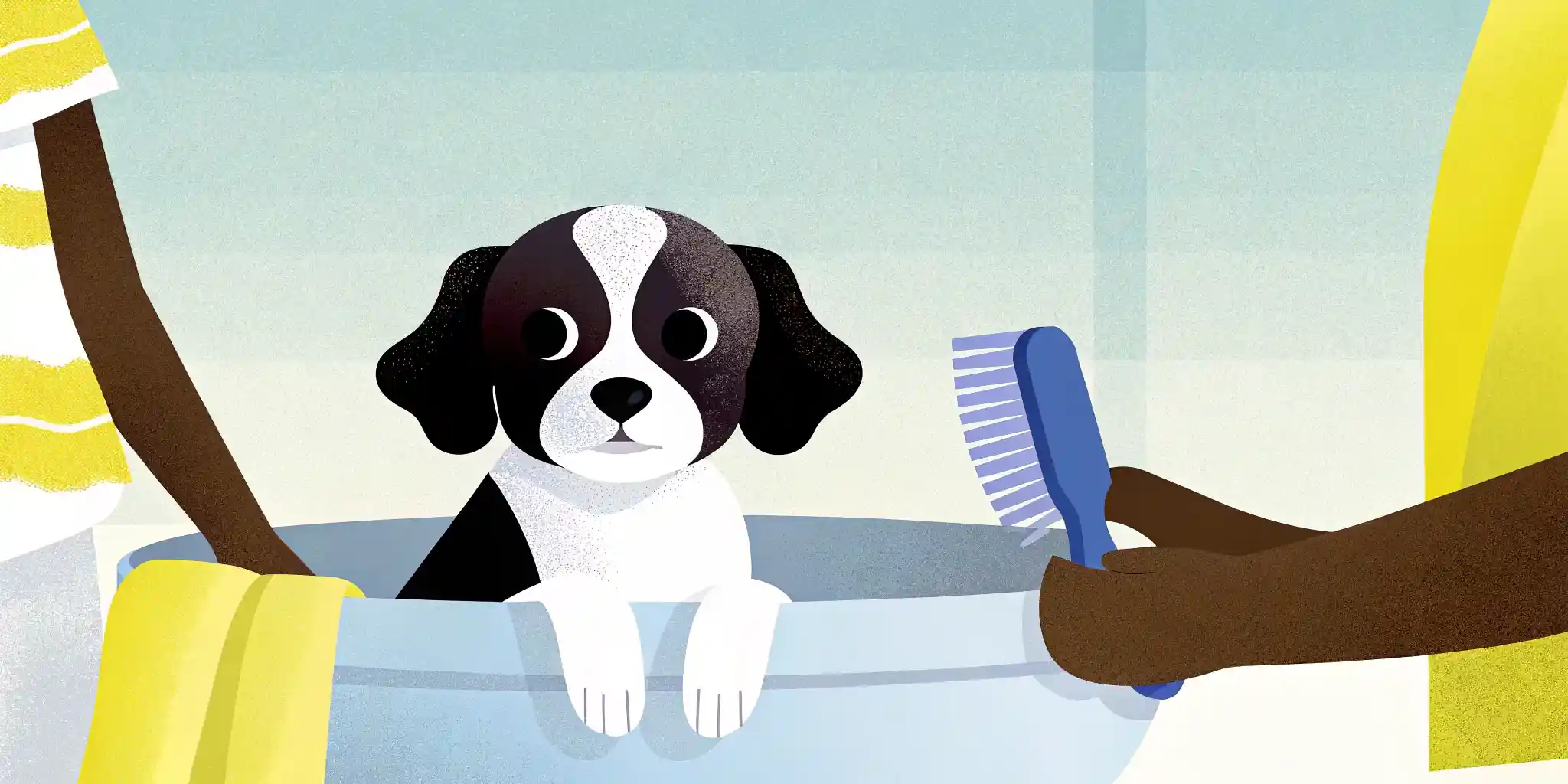
Puppy Grooming: Easy Basics for a Happy Pup
Happy pup, happy life! ✨ Easy puppy grooming tips for brushing, bathing, & nail trims. Start good habits NOW! #PuppyGrooming
Puppy Grooming Basics: Brushing, Bathing, and Nail Trims
Bringing a new puppy home is an exciting time! All those tiny paws and playful nips are simply irresistible. But along with the joy comes responsibility, and a big part of that is establishing a good grooming routine early on. Believe me, starting young makes life so much easier for both you and your furry friend in the long run. This isn’t just about keeping your puppy looking cute – it’s crucial for their health and well-being. Neglecting grooming can lead to painful mats, skin infections, and overgrown nails that affect their posture and gait. This guide covers essential puppy grooming basics, including brushing, bathing, and nail trims.
Brushing: More Than Just a Pretty Coat
Regular brushing is the cornerstone of any good grooming routine. It’s not just about aesthetics; brushing offers a host of benefits.
- Removes Loose Hair and Debris: Prevents mats and tangles, especially in long-haired breeds. Plus, less shedding in your house!
- Stimulates Circulation: Improves blood flow to the skin, promoting a healthy coat.
- Distributes Natural Oils: Keeps the coat shiny and healthy.
- Provides Bonding Time: A gentle brushing session can be a wonderful way to bond with your puppy.
Choosing the Right Brush:
The best brush for your puppy will depend on their breed and coat type.
- Slicker Brush: Excellent for removing mats and loose hair, especially in medium to long-haired breeds.
- Bristle Brush: Ideal for short-haired breeds to smooth the coat and remove surface debris.
- Undercoat Rake: Designed to remove loose undercoat, which is especially helpful for double-coated breeds like Huskies or German Shepherds.
- Grooming Mitt: Great for gentle daily brushing and desensitizing puppies to being touched.
How to Brush Your Puppy:
Start slow and make it a positive experience. Offer treats and praise during the process.
- Begin with short sessions, gradually increasing the duration as your puppy gets used to it.
- Brush in the direction of hair growth.
- Pay attention to areas prone to matting, such as behind the ears, under the armpits, and around the tail.
- If you encounter a mat, gently work it out with your fingers or a mat splitter tool. Never pull forcefully, as this can be painful.
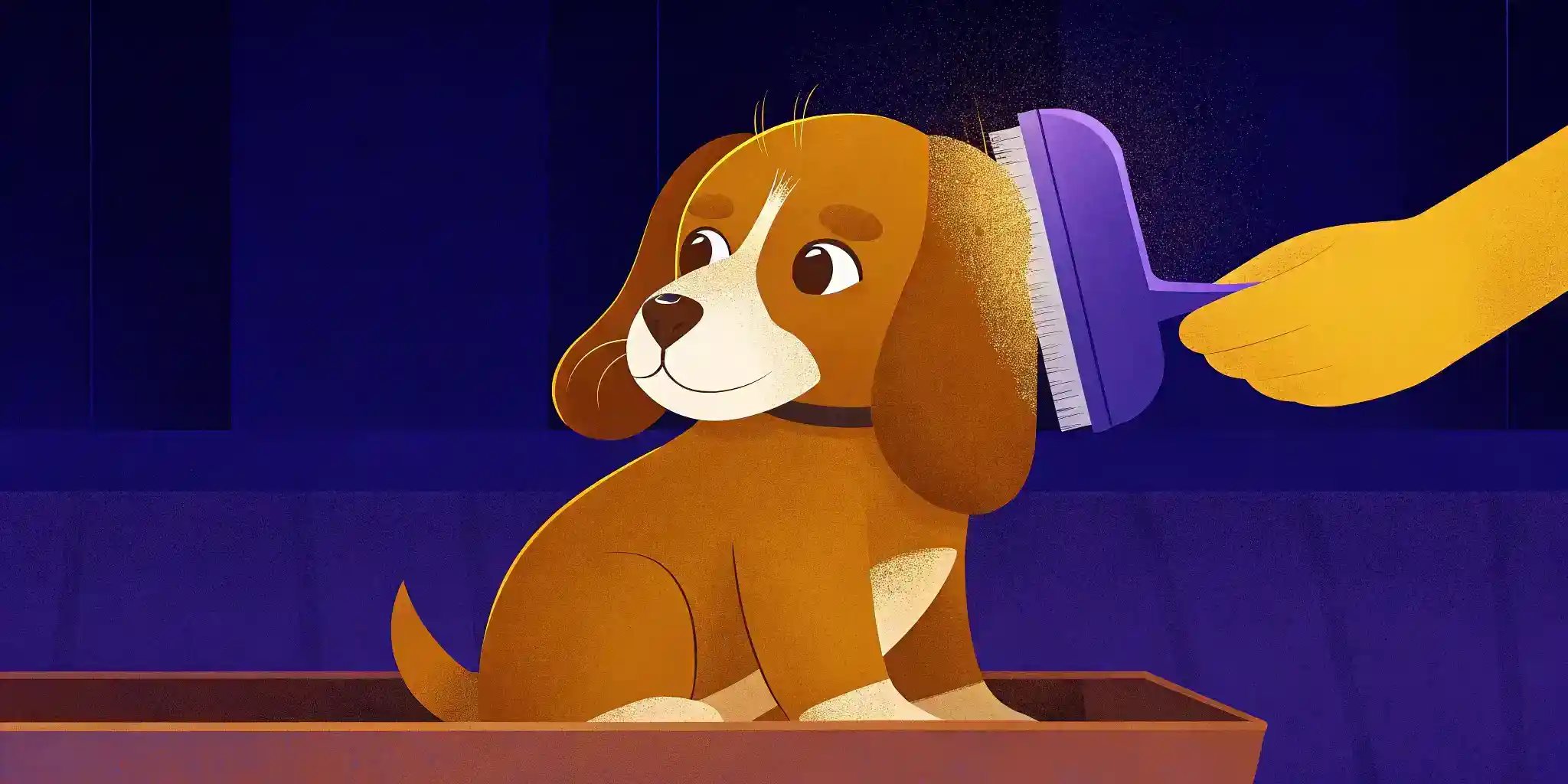 A happy puppy enjoying a gentle brushing session with a slicker brush. Regular brushing helps remove loose hair and prevent painful mats.
A happy puppy enjoying a gentle brushing session with a slicker brush. Regular brushing helps remove loose hair and prevent painful mats.
Bathing: When and How to Wash Your Pup
Bathing your puppy too often can strip their coat of natural oils, leading to dry skin and irritation. However, occasional baths are necessary to remove dirt, grime, and that inevitable puppy smell.
How Often to Bathe:
Generally, puppies only need a bath every 1-3 months, unless they get particularly dirty. In my experience, it’s better to err on the side of less is more.
Choosing the Right Shampoo:
- Puppy Shampoo: Always use a shampoo specifically formulated for puppies. These shampoos are milder and less likely to irritate their sensitive skin. Avoid adult shampoos, as they can be too harsh.
- Hypoallergenic Shampoo: If your puppy has sensitive skin or allergies, opt for a hypoallergenic shampoo.
- Oatmeal Shampoo: Oatmeal shampoos can soothe itchy skin and provide relief from dryness.
Bathing Tips:
- Gather Your Supplies: Puppy shampoo, towels, a non-slip mat for the tub, a cup or pitcher for rinsing, and a brush.
- Brush Before Bathing: This helps remove loose hair and mats, making the bathing process easier.
- Wet Your Puppy Thoroughly: Use lukewarm water and avoid getting water in their ears.
- Lather and Rinse: Gently massage the shampoo into your puppy’s coat, avoiding the eyes. Rinse thoroughly until all traces of shampoo are gone.
- Dry Your Puppy: Use a soft towel to dry your puppy as much as possible. If your puppy tolerates it, you can use a hairdryer on a low, cool setting. Be sure to keep the dryer moving to avoid overheating.
- Reward: After the bath, reward your puppy with treats and praise. This will help them associate bathing with positive experiences.
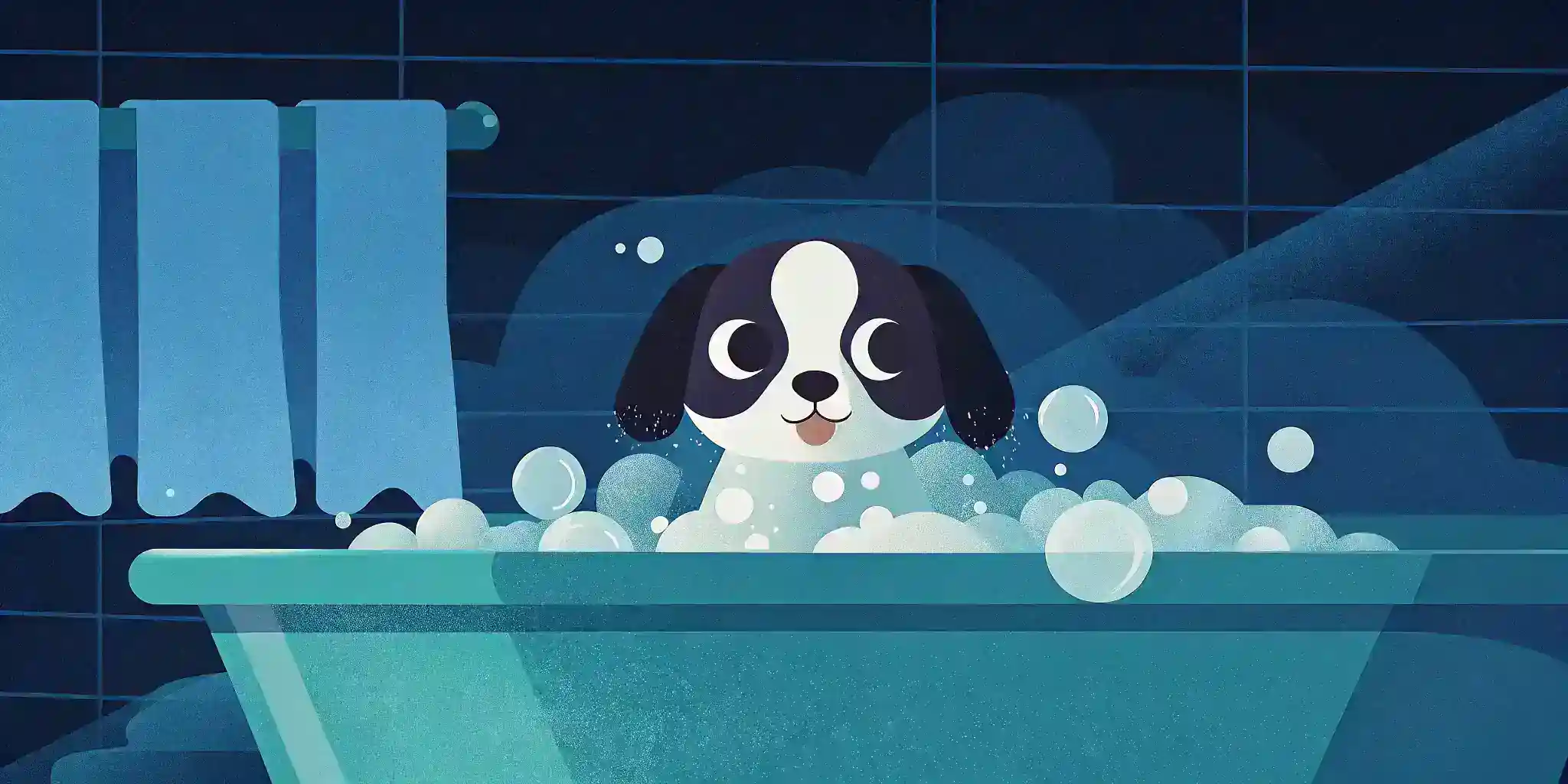 A small puppy being gently bathed in a tub. Using puppy-specific shampoo and lukewarm water is crucial for their sensitive skin.
A small puppy being gently bathed in a tub. Using puppy-specific shampoo and lukewarm water is crucial for their sensitive skin.
Nail Trims: Preventing Overgrown Claws
Regular nail trims are essential for your puppy’s health and comfort. Overgrown nails can be painful, affect their gait, and even lead to injuries.
How Often to Trim:
The frequency of nail trims will depend on your puppy’s breed, activity level, and the type of surfaces they walk on. Generally, you should aim to trim their nails every 2-4 weeks. If you hear their nails clicking on the floor, it’s time for a trim.
Tools You’ll Need:
- Nail Clippers: Guillotine-style or scissor-style clippers are both suitable. Choose whichever you feel most comfortable using.
- Styptic Powder: This is a must-have in case you accidentally cut the quick (the blood vessel in the nail).
- Treats: To reward your puppy and make the experience positive.
How to Trim Your Puppy’s Nails:
- Get Your Puppy Comfortable: Start by handling your puppy’s paws frequently, getting them used to being touched.
- Identify the Quick: The quick is the pink part of the nail that contains blood vessels and nerves. Avoid cutting into the quick, as it will cause pain and bleeding. In light-colored nails, the quick is usually easy to see. In dark-colored nails, it can be more difficult.
- Trim the Nails: Using the clippers, trim small pieces of the nail at a time. If you’re unsure, err on the side of caution and trim less rather than more.
- Stop the Bleeding (If Necessary): If you accidentally cut the quick, apply styptic powder to the bleeding nail. Press gently until the bleeding stops.
- Reward Your Puppy: After each nail trim, reward your puppy with treats and praise.
A Word of Caution:
Many owners are nervous about trimming their puppy’s nails, and that’s okay! If you’re not comfortable doing it yourself, don’t hesitate to seek professional help from a groomer or veterinarian. They can show you the proper technique and provide guidance.
I believe that introducing nail trims early and often is the key to success. Even if you just touch their paws with the clippers and give them a treat, you’re desensitizing them to the process.
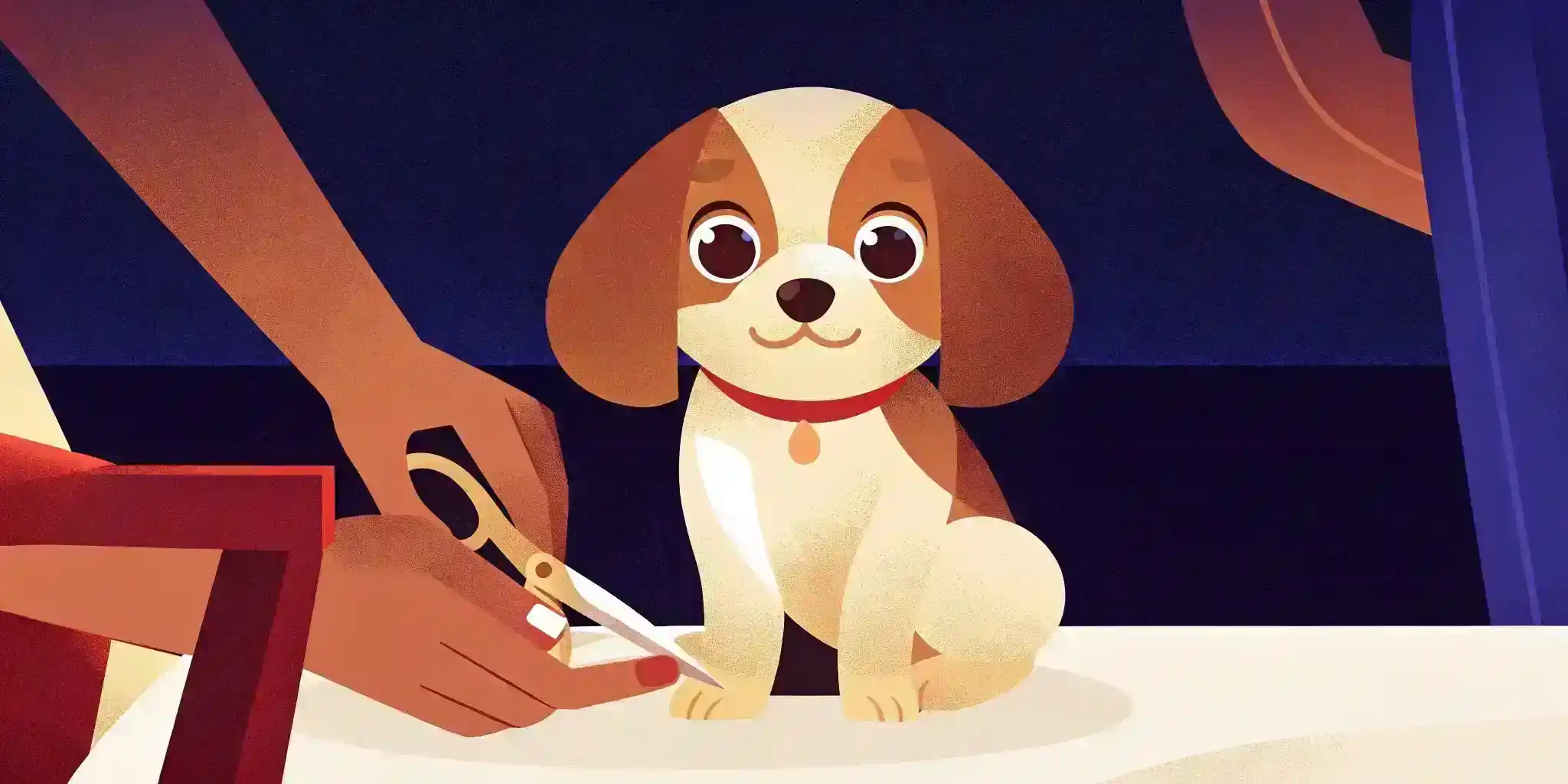 Close-up of a puppy’s paw during a nail trimming session. Avoid cutting into the quick to prevent pain and bleeding.
Close-up of a puppy’s paw during a nail trimming session. Avoid cutting into the quick to prevent pain and bleeding.
Making Grooming a Positive Experience
The key to successful puppy grooming is to make it a positive experience. Start slowly, be patient, and always use positive reinforcement. With consistent training and gentle handling, you can help your puppy learn to enjoy grooming time. Remember, a well-groomed puppy is a happy and healthy puppy! Always consult with your veterinarian or a professional groomer if you have any concerns about your puppy’s grooming needs or how to handle specific situations. They can provide personalized advice and guidance based on your puppy’s breed, coat type, and individual needs.

